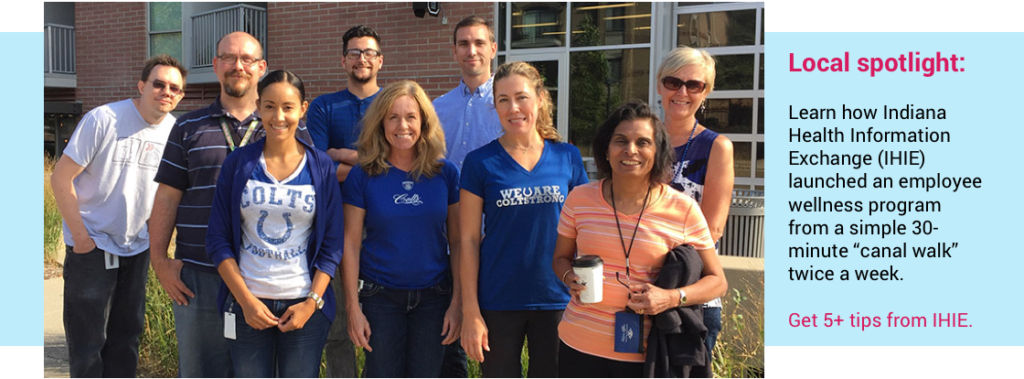Why talk about “workplace wellness” when talking about childhood obesity?
Let’s be honest. Sometimes when we mention “workplace wellness” as a strategy to reduce and prevent childhood obesity, we see confusion on listeners’ faces. If you don’t serve kids or employ kids, what difference does it make what you do at the office? The rationale is plentiful, but it mostly boils down to two big reasons: role models and money.

What happens at the office influences what happens at home
Full-time employees often consume half or more of their daily calories while at the workplace and spend 25% or more of their waking hours at the office each week. So it isn’t hard to imagine that habits established or reinforced there spill over into the family home. Many, if not most, full-time employees are parents, and parents’ healthy (or unhealthy) habits influence their kids. When parents can learn in the workplace how to practice healthy behaviors, that practice can be taught and modeled at home. So often we as adults don’t quite know what “healthy” means (try 5-2-1-0!), and places of work are one venue to help inform adults so that they know what kinds of good habits they should be teaching and modeling for their kids.
Simple, no-cost or low-cost changes can help employers establish a culture of good health. For specific suggestions, check out our guides 4 Strategies to Increase Healthy Eating in the Workplace and 5 Simple Steps to Increase Physical Activity at Work.
Employers can also help busy employees sift through confusing and sometimes conflicting advice about what constitutes “healthy” by embedding tips and resources directly into the company’s existing communication tools. Get ideas and 52 ready-to-use messages.

Poor health is costly
The Indiana State Department of Health states that preventable illness makes up 90% of all health care costs. The community pays the cost for poor health – literally. A team of researchers at the Center for Health Policy at IU Richard M. Fairbanks School of Public Health found that health care for Hoosier children with obesity costs 7% more than health care for children who are at healthy weights. There’s not enough data to tell us exactly why.
Perhaps even more startling, among 18- and 19-year-olds – Indiana’s young workforce – hospital care costs 36% more for those with obesity. The cost extends beyond care. Employees miss work when they or someone they care for is sick. Illnesses, hospital stays, and doctor appointments steal hours from the office, but healthy employees with healthy families have fewer unplanned absences. Studies find that wellness programs can help reduce absenteeism by 25%.
It’s easy to start
Now is a great time to begin or expand your employee wellness program. We can help. In addition to the guides mentioned in the text above, you may be inspired by these stories from central Indiana employers:
* United Way of Central Indiana employee inspires, supports coworkers
* Pike High School challenges staff to lead healthier lives
* American Structurepoint helps employees eat healthy with free fruit, nutrition workshops
* Indiana Health Information Exchange employee leads expansion of simple program

Topics: Employer Wellness, Uncategorized
Subscribe for more
Want more ideas for healthy schools, workplaces, child care providers, and families? Subscribe to our blog for weekly tips delivered right to your inbox!
What Role Do Child Care Providers Play in Obesity Prevention? NEXT »
What Schools Can Do about Childhood Obesity
